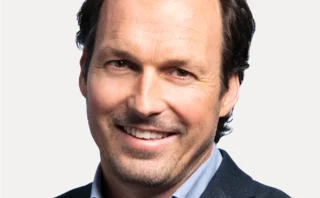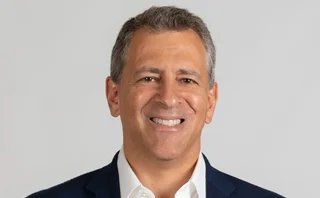
Environmental products – Corporate of the year: Engie
Energy Risk Awards 2020: French utility further improves green credentials and helps clients reach environmental goals

Global utility Engie has long pursued a green agenda, but recently it has ratcheted up its environmental ambitions, setting itself up as a leader in the transition to the zero-carbon economy and transforming its business model accordingly.
Over the past 18 months, the firm has ramped up its renewables and demand-side response capabilities, and increased its gas network. It has evolved from a supply-driven electricity producer to a green mid-streamer, helping clients achieve their environmental goals.
Despite lower energy consumption because of the Covid-19 crisis this year, demand for clean energy continues to soar, says Jérôme Malka, head of green power and an executive committee member at Engie’s Global Energy Management business unit. “Some of our customers can get lost in the complexity of reaching their carbon neutrality goal and we help them achieve this by guiding them through the different solutions Engie can offer,” he says. “We also see a dynamic of customers demanding more from green power supply than purely reputational or even financial outcomes. These customers care about subjects like additionality, proximity and real-time green consumption, which obviously adds complexity and risk.”
To best address these needs, the firm launched its global environmental solutions desk in 2018, bringing together its environmental and risk management expertise. The desk helps connect upstream renewable assets with downstream green demand by structuring renewable power purchase agreements (PPAs), which come with a supply of guarantees of origin. It also manages price risk on other types of certificates, such as international renewable energy certificates (i-RECs), biogas, carbon credits and energy efficiency certificates. Enabling much of this work is a network of client platforms developed by Engie that digitalises many aspects of renewables trading.
As a result of this work, Engie has been able to facilitate some unique structures, including helping pioneering firms that wish to tie their green power purchases to a particular renewable asset rather than just buying electricity with associated green guarantees of origin. “The old green isn’t green enough for some firms now,” says Maxime Vermeire, head of power structuring and origination.
However, such deals are extremely complex. To obtain financing, especially in today’s credit-constrained environment, green energy developers need some certainty over mid- to long-term prices and volumetric offtake. But the intermittency of renewables and the volatility of power prices in general makes this very challenging to achieve. Engie has structured a number of landmark deals recently that address just these issues and demonstrate its ability to build complex, long-term renewable PPAs. These include an 11-terrawatt-hour 12-year deal with Microsoft; a 92 megawatt (MW) offshore wind purchase by Google; and an 8.4MW offshore wind purchase by global industrial Lhoist.
In another stand-out deal, this time with L’Oréal, Engie created a new environmental standard in China. This tailor-made REC means L’Oréal can prove that 100% of its activities in China are powered by green energy, says Vermeire.
The environmental attributes correspond to the renewable electricity generated from a portfolio of distributed solar photovoltaic projects developed by Engie China and its subsidiary Unisun. The five-year deal, signed in July 2019, has a further seven-year extension clause.
Engie’s increasing renewables capacity underpins many of these deals and is central to its green strategy. In February 2019, it set a target of deploying 9 gigawatts (GW) of new renewable energy capacity worldwide between 2019 and 2021, and has already met the commissioning target. Last year, it commissioned an additional 3GW of renewable energy capacity, four times that of 2018. Renewable energy sources now account for 28% of Engie’s generation capacity overall. Wind and solar production rose 49% in 2019 versus 2018, and the firm increased its hydro capacity too.

With Engie’s increased renewables capacity comes a greater exposure to weather. Here, too, it has created some innovative products. It takes a portfolio approach to its own physical climate risk, as well as offering clients weather hedges that can be included in PPAs.
The firm has also hiked its demand response capabilities and now has 400 industrial firms and tertiary buildings in Europe that it can ask to curtail electricity use at certain times. “With our increasing renewable portfolio, part of our strategy is to increase our stake in these carbon-free flexible solutions on both the demand and production sides,” says Vermeire. This helps balance the grid, but it also reduces the need for additional carbon-intensive generation.
Engie has committed to a science-based target (SBT) to align it with the Paris Accord – the international agreement designed to prevent global temperatures rising more than 2 degrees Celsius above pre-industrial levels.
It has slashed scope 1 emissions – those pertaining to its own industrial processes – by 55% since 2016, and new objectives for 2030 under the SBT initiative involve reducing the rate of emissions per kilowatt hour of energy production between 2017 and 2030 by 52% and reducing the emissions linked to the use of the group’s products (scope 3 emissions) sold between 2017 and 2030 by 34%. These reductions cover 96% of scope 1 emissions and 91% of scope 3 emissions.
Only users who have a paid subscription or are part of a corporate subscription are able to print or copy content.
To access these options, along with all other subscription benefits, please contact info@risk.net or view our subscription options here: http://subscriptions.risk.net/subscribe
You are currently unable to print this content. Please contact info@risk.net to find out more.
You are currently unable to copy this content. Please contact info@risk.net to find out more.
Copyright Infopro Digital Limited. All rights reserved.
As outlined in our terms and conditions, https://www.infopro-digital.com/terms-and-conditions/subscriptions/ (point 2.4), printing is limited to a single copy.
If you would like to purchase additional rights please email info@risk.net
Copyright Infopro Digital Limited. All rights reserved.
You may share this content using our article tools. As outlined in our terms and conditions, https://www.infopro-digital.com/terms-and-conditions/subscriptions/ (clause 2.4), an Authorised User may only make one copy of the materials for their own personal use. You must also comply with the restrictions in clause 2.5.
If you would like to purchase additional rights please email info@risk.net
More on Commodities
Energy Risk Asia Awards 2025: The winners
Winning firms showcase the value of prudent risk management amid challenging market conditions
Data and analytics firm of the year: LSEG Data & Analytics
Energy Risk Awards 2025: Firm’s vast datasets and unique analytics deliver actionable insights into energy transition trends
OTC trading platform of the year: AEGIS Markets
Energy Risk Awards 2025: Hedging platform enhances offering to support traders and dealers in unpredictable times
Electricity house of the year: Natixis CIB
Energy Risk Awards 2025: Bank launches raft of innovative deals across entire electricity supply chain
Voluntary carbon markets house of the year: SCB Environmental Markets
Energy Risk Awards 2025: Environmental specialist amplifies its commitment to the VCM
Sustainable fuels house of the year: Anew Climate
Energy Risk awards 2025: Environmental firm guides clients through regulatory flux
Weather house of the year: Parameter Climate
Energy Risk Awards 2025: Advisory firm takes unique approach to scale weather derivatives markets
Hedging advisory firm of the year: AEGIS Hedging
Energy Risk Awards 2025: Advisory firm’s advanced tech offers clients enhanced clarity in volatile times








